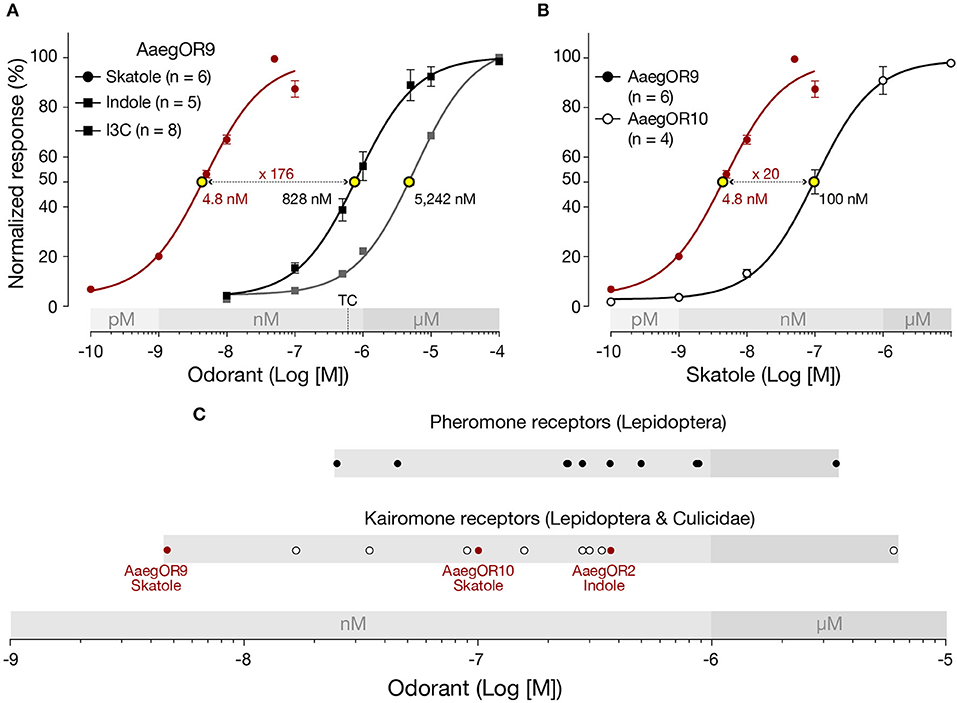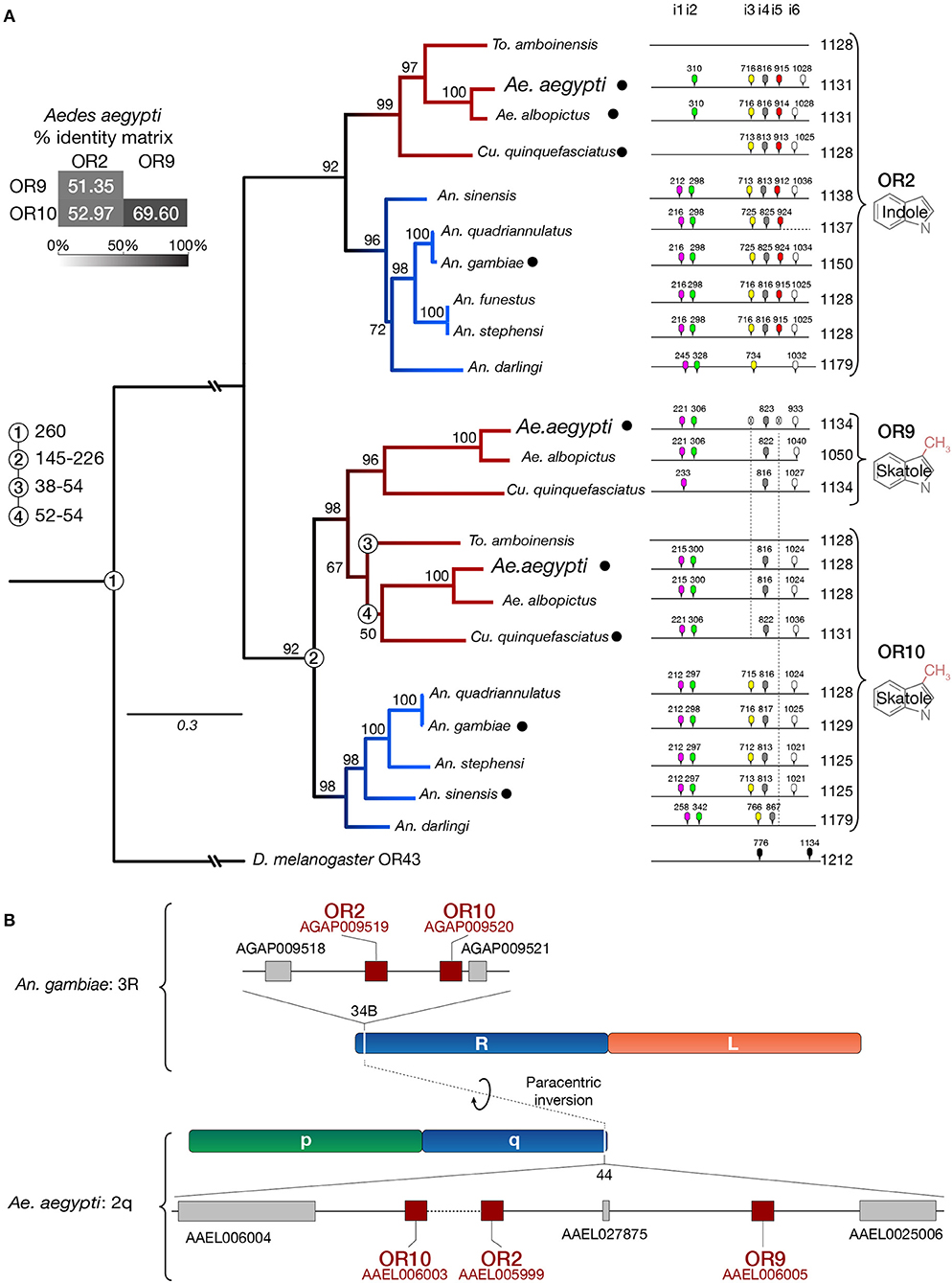A Corrigendum on
Supersensitive Odorant Receptor Underscores Pleiotropic Roles of Indoles in Mosquito Ecology
by Ruel, D. M., Yakir, E., and Bohbot, J. D. (2019). Front. Cell. Neurosci. 12:533. doi: 10.3389/fncel.2018.00533
An author name was incorrectly provided as “David Ruel.” The correct name is “David M. Ruel.” A correction has been made to the author list.
Furthermore, in the original article, there was a mistake in Figure 2 as published. There is a typo in the legend of the y axis in Graph A. “Normalized esponse (%)” should be “Normalized response (%).” The corrected Figure 2 appears below.

Figure 2. Aedes aegypti OR9 (AaegOR9) is a supersensitive skatole receptor. (A) Based on their respective EC50 values (yellow dots), AaegOR9 is significantly (one-way ANOVA followed by Tukey's post test; p < 0.0001) more sensitive to skatole than to indole or to indole-3-carboxaldehyde (I3C). The concentration (500 nM) to which the tuning curve is based on is indicated by “TC.” (B) AaegOR9 is a more sensitive skatole receptor than AaegOR10 (t-test; p < 0.01). (C) Sensitivity ranking (according to EC50 values of cognate receptor-semiochemical interactions) of pheromone and kairomone receptors (Supplementary Table 2).
Lastly, in the original article, there was a mistake in Figure 3 as published. The proposed exon structure for OR2 does not fit the phylogenetic tree labels. Aedine and Anopheline have erroneously been swapped. The corrected Figure 3 appears below.

Figure 3. Or9 is a Culicinae-specific gene expansion. (A) DNA sequence identity, substitution rates, intron locations and odorant ligands (deorphanized receptors are labeled with a black dot, see Supplementary Table 2) suggest that Or9 is a Culicinae-specific gene expansion while Or2 and Or10 are present in both Culicinae (red branches) and Anophelinae (blue branches). Intron locations are color-coded and numbered from 1 to 6 (i1–i6). Missing introns are indicated by a crossed intron with a dotted lines underneath. Bootstrap values (%) are based on 5,000 replicates. Numbered circles on branch points indicate lineage splits in million years (MY). (B) Indolergic receptors are located on the q arm of chromosome 2 and on the R arm of chromosome 3 in Ae. aegypti and An. gambiae, respectively. Transcript numbers are shown for An. gambiae (AGAP#) and Ae. aegypti (AAEL#).
The authors apologize for these errors and state that this does not change the scientific conclusions of the article in any way. The original article has been updated.
Keywords: odorant receptor, indole, skatole, mosquito, Aedes aegypti
Citation: Ruel DM, Yakir E and Bohbot JD (2019) Corrigendum: Supersensitive Odorant Receptor Underscores Pleiotropic Roles of Indoles in Mosquito Ecology. Front. Cell. Neurosci. 13:488. doi: 10.3389/fncel.2019.00488
Received: 10 October 2019; Accepted: 15 October 2019;
Published: 06 November 2019.
Edited and reviewed by: Dieter Wicher, Max Planck Institute for Chemical Ecology, Germany
Copyright © 2019 Ruel, Yakir and Bohbot. This is an open-access article distributed under the terms of the Creative Commons Attribution License (CC BY). The use, distribution or reproduction in other forums is permitted, provided the original author(s) and the copyright owner(s) are credited and that the original publication in this journal is cited, in accordance with accepted academic practice. No use, distribution or reproduction is permitted which does not comply with these terms.
*Correspondence: Jonathan D. Bohbot, am9uYXRoYW4uYm9oYm90QG1haWwuaHVqaS5hYy5pbA==
 David M. Ruel
David M. Ruel Esther Yakir
Esther Yakir Jonathan D. Bohbot
Jonathan D. Bohbot